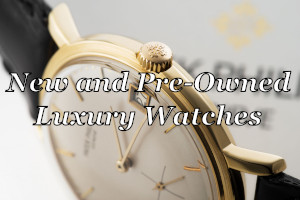Vogue Returning to Luxury Fabrics

Affluent consumers will ride out the economic downturn on a bed of luxury linens, surrounded by colors and fabrics that soothe the senses.
That’s the prediction of local textile designer Barbara Beckmann, who displayed some of her recent creations last week at the San Francisco Design Center’s Winter Market.
Rather than buying new homes, the trend will be to upgrade current property. “Those who can stay in the real estate market will lean toward luxury” when they redecorate, Beckmann said.
“Designers I worked with years ago are coming back to me to update the projects we worked on together,” she said. “People are coming back to luxury more and more. We’re going to see more hand-done work because people can appreciate what isn’t made in China.”
Beckmann MooreYaki Studio, where its founder spoke, carries “the top 1 percent of what’s available in the industry,” said interior designer Kristina Moore Yaki, the studio’s principal. “And in hand-painted fabrics, Barbara sets the standard.”
The studio’s clients include the Bellagio in Las Vegas, the Claremont Resort in Oakland and the royal palace in Dubai. “Gold and silver are becoming very important again,” Beckmann said. “They create the look of luxury. We’re going to see this market coming back.”
Carolyn Ray, another Beckmann MooreYaki manufacturer, also features metallics in her fabrics. Many of her wall coverings and textiles have floral patterns, while others feature strong geometric shapes.
Asian motifs abound in Beckmann’s fabrics and in those of Charlotte Forish, also at Beckmann MooreYaki. Forish’s company, Chez Charlotte of San Rafael, offers textiles that are hand-screened on silk dupioni, linen and moleskin.
Soft jewel tones, especially blue, are popular in a number of textile lines. Beckmann’s jewelry was the inspiration for her collection featuring shades of quartz, amber, topaz, citrine, jade and two blues: aquamarine and sapphire.
For clients in the hospitality industry, Beckmann’s designs can be printed on solution-dyed acrylic. The durable fabric can be washed in cold water and is suitable for outdoor as well as indoor use, she said.
Another trend in high-end design is the customization of fabric. “A good fabric is like a great accessory,” Beckmann said. “Fabric makes the room.”
Well-ensconced in that marketing niche is Shoshana Enosh, whose company, Micana, hand-dyes its yarn before weaving it – on human-operated, wooden looms – into luxury textiles.
“The art of dyeing is an art with a bit of science,” she said, recalling how she learned the craft. “We practiced in an old-fashioned claw-foot bathtub for a year before we got it right.”
Now her company can custom-match colors to clients’ specifications. Enosh’s focus at last week’s market was on custom chenille patterns. “It’s as soft as a baby’s bottom,” she said of a chenille throw she passed around to a studio full of admirers. “There’s absolutely nothing softer than this.”
At Holland & Sherry’s custom embroidery presentation, “Haute Couture for the Home,” Nicholas Chambeyron, formerly of Dior, described his transition from apparel to home fashions.
“We started with border designs, then moved to all-over designs, and finally to the finished product,” he said. “We use a lot of computer processes, machine processes, but all the details are worked by hand” at a factory in Germany.
In creating its textiles, the company can copy architectural details from a room and put them into embroidery or appliques. “I’m trying to make things very refined and elegant,” Chambeyron said. “There is no puckering of the fabric where it’s embroidered.”
Holland & Sherry makes its own chenille, and its line includes chenille-on-linen designs. The company also embroiders on leather, and uses leather as an applique on other fabrics.
“Most of the designs are not very traditional or old-fashioned,” Chambeyron said as he displayed a number of geometric patterns, some with a Far Eastern influence.
One design featured rectangular cutouts on a mostly solid background. When sunlight shone through the openings in the cloth, the design evoked the many windows of a city skyline. Another design looked to the past. Embroidered on a light-colored background, it featured farm motifs: a flower, a rooster and a child feeding a dog.
Article written by Jennifer Williams – San Francisco Chronicle





